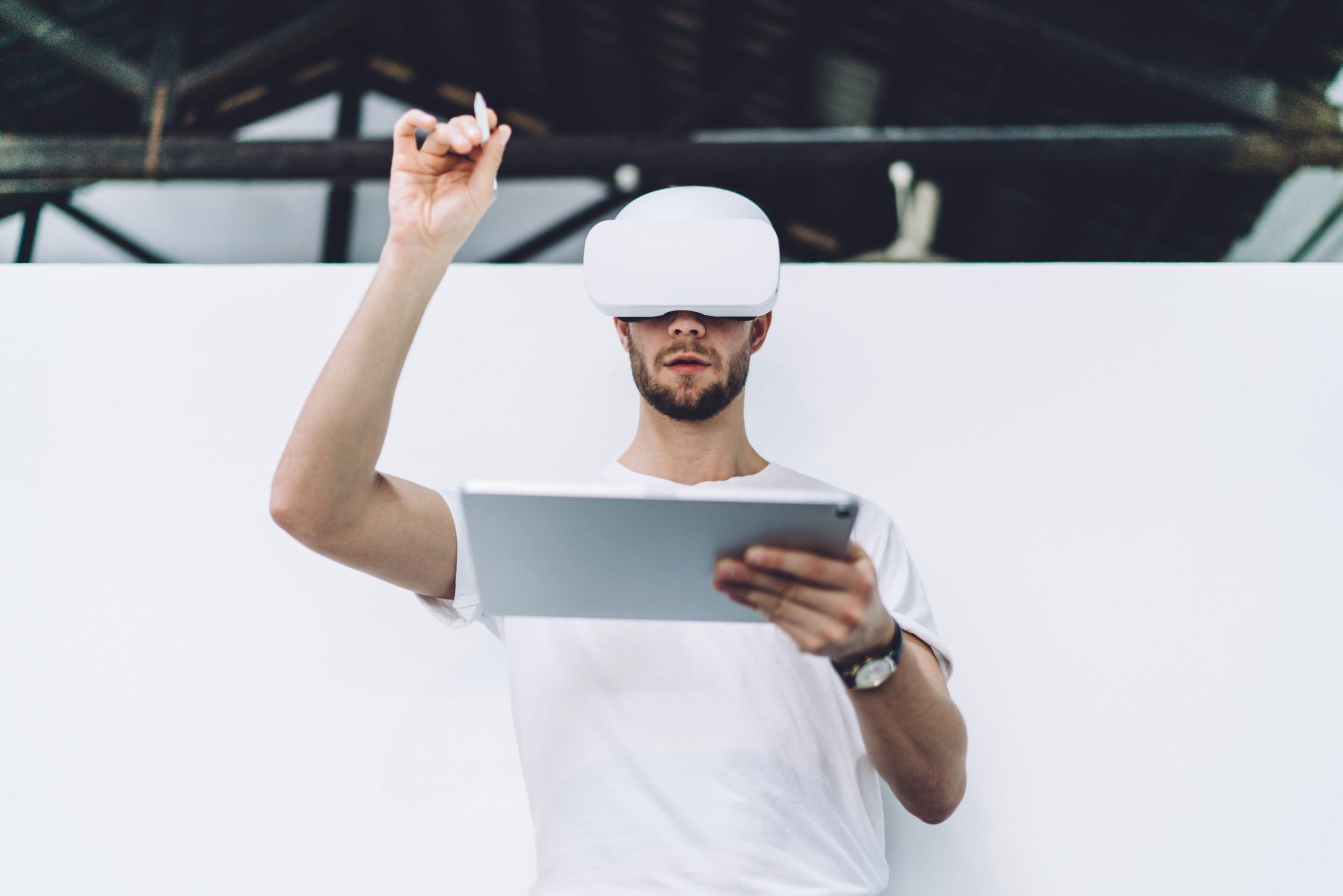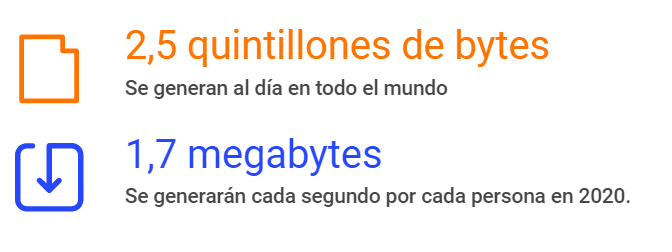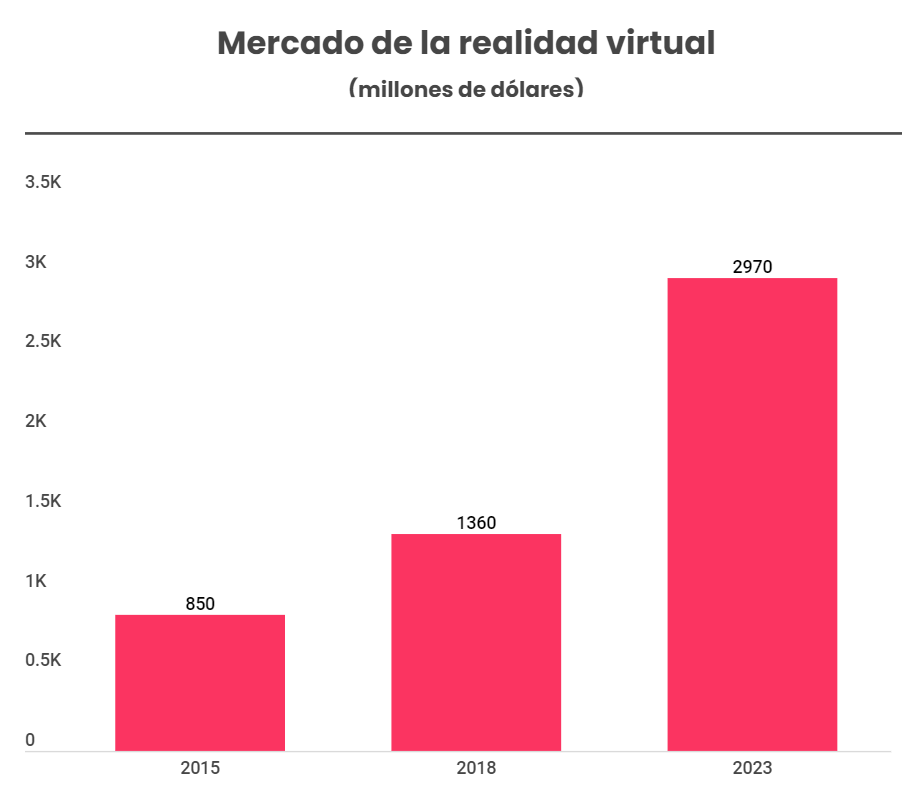Virtual reality, a new tool to understand big data

Virtual reality is changing the way video games and videos are consumed, the way social media advertising is done, how education and healthcare are accessed, and also how data is analyzed.

On the other hand, Big Data is a term used to describe the volumes of data that each digital signature constantly generates. However, it’s not just about data, it’s about discovering the knowledge and perspectives that are hidden in that data. All that information is useless if you can’t draw useful knowledge from it quickly and efficiently.
Data forms the core of companies’ strategies to know what customers want and what their competitors do. There are a lot of different types of data that can be collected, it is estimated that more than 2.5 quintillion bytes of data are generated per day. In addition, it is expected that by 2020 1.7MB of data will be created every second for each person on earth.

The visualization
Visualization is the bridge between quantitative data information and human intuition and understanding. Traditional display, limited to a flat screen, is inherently limited. But complex structures that can exist in three or more dimensions are lost when projected onto a lower-dimensional screen.
This is where virtual reality comes in. This technology does much more than just add an extra dimension to a data screen. When information is displayed in 3D space you can easily navigate, as well as encode and understand various dimensions of data by using colors, shapes, transparencies, animations, etc.
An example of this is the first platform created by Virtualitics, which merges Artificial Intelligence, Big Data and Virtual Reality.
Virtual reality and data
Data visualization in virtual reality and augmented reality could be the next big use case for these technologies. Right now it’s still in its infancy, however, recent examples of 3D data visualizations already suggest big changes in the way you interact with your data.
The virtual reality market is now reaching $1.36 billion and is expected to exceed $2.97 billion in 2023 to a CAGR of 16.96%.

The presentation of 3D data and the placement of a user in a 3D simulation allows us to process information faster and retain it for longer. The immersive nature of virtual reality, combined with the most natural presentation of information in virtual reality, allows the user to increase the amount of data they process.
Recently, for example, the company Genesys, has conducted experiments, in which it helps other companies optimize their customer service experience, with the implementation of virtual and augmented reality.
On the other hand, an obvious application of the benefits of virtual reality comes from the world of science. Currently, there are too many scientific journals for the average researcher to stay up-to-date.
VR allows a scientist to immerse himself in the world of these publications, extract information relevant to a particular research and respond to the subtle manipulations of individual variables to see the possible outcomes, allowing them to cross-referencing data in a manner unprecedented in human history.
VR has the ability to alter any industry in which a large amount of information is generated in a way that human minds cannot fully envelop to make an informed decision about a result.
The drawbacks
One of the big hits against virtual reality is that right now it’s a big single-user experience. In the age of social technology, that’s a big obstacle.
However, data visualization is a great opportunity for developers to create and sell mixed reality experiences from multiple players. One of the leading companies in the space is Virtualitics, as mentioned above, which offers 3D datasets that multiple users can experience and manipulate at the same time.
According to one of the company’s leaders:
“The 3D collaboration environment links data with the natural recognition of human patterns to discover multidimensional relationships, extracting actionable knowledge that cannot be discovered by any other means.”
Virtualitics also incorporates geospatial data into immersive 3D maps. For example, data on the company’s global valuation worldwide for a subset of the market, historical seismic activity in the Pacific Ocean, or price volatility for various companies can be projected into a globe, creating representations that are based on visual touch elements known for terrestrial data.
In both cases, visualizations can be shared quickly and seamlessly across an organization. Because data can “escape” traditional silos and reach decision-makers more easily.
Another company, DataView VR, is leaning towards the collaborative aspect by powering immersive data presentations. Anyone who sees the presentation can focus on combining those dimensions and visually recognizing the patterns. Nearby dimensions can add new datasets, new variables, and work together to truly understand all that information.
Similarly, a company called 3Data provides tools to create powerful RA data projections in real-world environments that workgroups can use to collaborate. It offers a virtual meeting space where distributed work teams can meet and view and work on data projections as if they were the same space.
Conclusions: What will the future hold?
Although much of its use is limited to video games and kitsch applications, augmented reality’s projection capability can be leveraged for powerful data visualizations.
The intersection of virtual reality and augmented reality with Big Data represents an incredible creative opportunity. Visual communication and data visualization began to gain recognition as an art in the 1990s and early 2000s, and is expected to continue to advance in the future.
However, it is important to understand that, despite all the promises and possibilities, there is still time before this union between technologies becomes a reality in the world of data visualization at the work level. Virtual reality looks promising as the future of data visualization, but businesses and academia have a long way to go before using it.
On an expert level, the lines between the real and the false will continue to be blurred, meaning that VR professionals will have to work tirelessly to get support from consumers who can initially distrust the use harmful to technology. However, despite these fears, both virtual reality and augmented reality have a bright future ahead in large part thanks to the way massive data helps transform it from a fantasy into a practical business reality.


